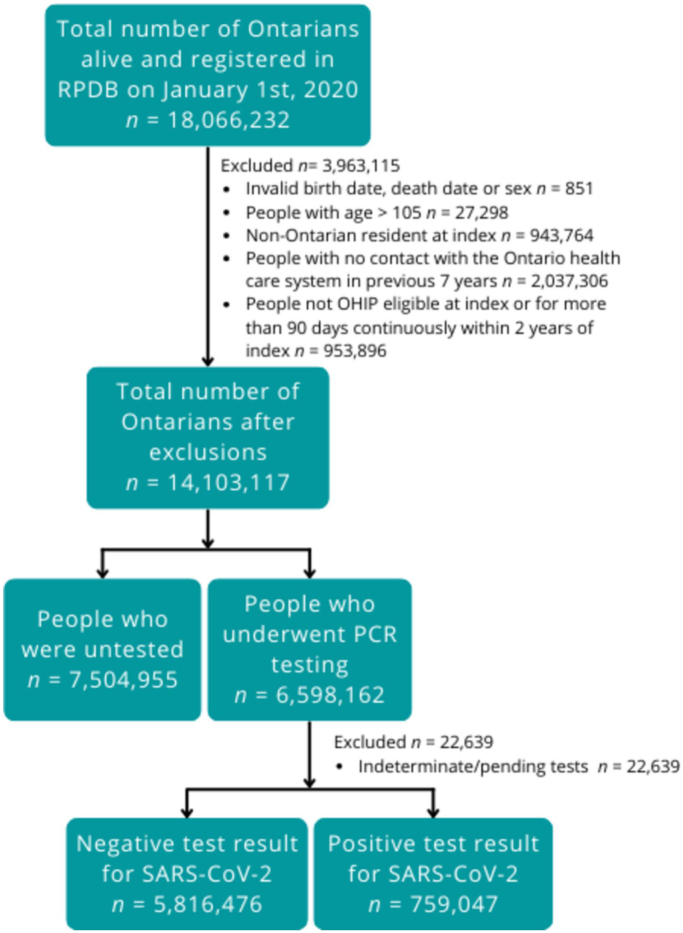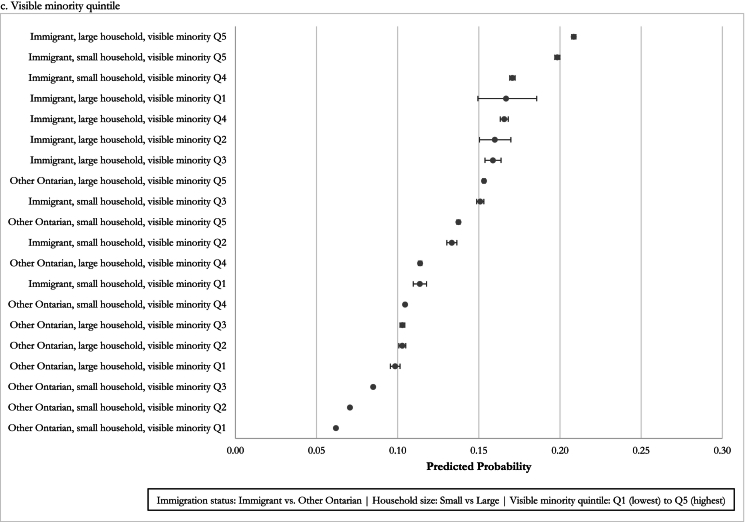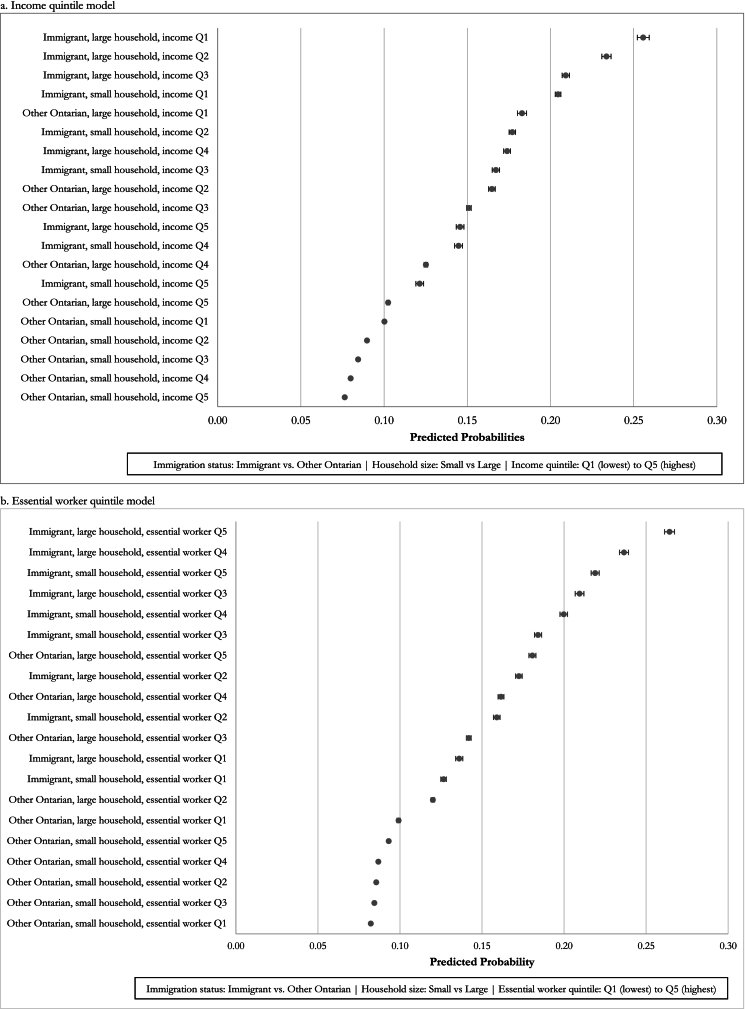社会因素组合与SARs-CoV-2感染的关联:2020-2021年安大略省回顾性人群队列研究
引用次数: 0
摘要
目的:2019冠状病毒病大流行凸显并加剧了全球卫生不公平现象。虽然有几项研究调查了个体社会因素对COVID感染的影响,但我们的目标是研究在大流行的头两年,社会因素的相互作用与SARS-CoV-2检测呈阳性的风险之间的关系。研究设计和环境:我们对2020年1月1日至2021年12月31日期间接受SARS-CoV-2检测的安大略省居民进行了一项观察性队列研究,使用了相关的卫生行政数据。我们构建了多变量模型,以检验SARS-CoV-2阳性与关键变量之间的关系,包括移民身份(移民与其他安大略省人),以及家庭规模、收入、基本工人身份和少数族裔身份等社区变量。我们使用比值比和预测概率报告主效应和交互效应,并在所有模型中控制年龄和性别。结果:在队列中的6,575,523名安大略省人中,88.5%的人检测为阴性,11.5%的人检测为阳性。在所有模型中,移民和居住在平均家庭规模较大社区的人检测出SARS-CoV-2阳性的几率更大。这些协会的力量随着社区在收入、基本工人比例和少数族裔比例方面被边缘化程度的增加而增强。我们观察到,在居住在家庭规模较小的社区的其他安大略省居民中,不同社区收入五分位数的检测阳性概率变化不大,但在居住在家庭规模较大的社区的其他安大略省居民中,检测阳性概率变化很大。结论:我们的研究发现,在具有某些社会因素组合的人群中,SARS-CoV-2阳性更大,但在所有情况下,移民检测阳性的概率始终高于其他安大略省人。考察社会因素之间的相互作用,比单独考察各种因素,可以更细致、更全面地了解健康不平等。本文章由计算机程序翻译,如有差异,请以英文原文为准。



The association of combinations of social factors and SARs-CoV-2 infection: A retrospective population-based cohort study in Ontario, 2020–2021
Objective
The COVID-19 pandemic highlighted and exacerbated health inequities worldwide. While several studies have examined the impact of individual social factors on COVID infection, our objective was to examine how interactions of social factors were associated with the risk of testing positive for SARS-CoV-2 during the first two years of the pandemic.
Study design and setting
We conducted an observational cohort study using linked health administrative data for Ontarians tested for SARS-CoV-2 between January 1st, 2020, and December 31st, 2021. We constructed multivariable models to examine the association between SARS-CoV-2 positivity and key variables including immigration status (immigrants vs. other Ontarians), and neighbourhood variables for household size, income, essential worker status, and visible minority status. We report main and interaction effects using odds ratios and predicted probabilities, with age and sex controlled in all models.
Results
Of 6,575,523 Ontarians in the cohort, 88.5 % tested negative, and 11.5 % tested positive for SARS-CoV-2. In all models, immigrants and those living in neighbourhoods with large average household sizes had greater odds of testing positive for SARS-CoV-2. The strength of these associations increased with increasing levels of neighbourhood marginalization for income, essential worker proportion and visible minority proportion. We observed little change in the probability of testing positive across neighbourhood income quintiles among other Ontarians who live in neighbourhoods with smaller households, but a large change in probability among other Ontarians who live in neighbourhoods with larger households.
Conclusion
Our study found that SARS-CoV-2 positivity was greater among people with certain combinations of social factors, but in all cases the probability of testing positive was consistently greater for immigrants than for other Ontarians. Examining interactions of social factors can provide a more nuanced and more comprehensive understanding of health inequity than examining factors separately.
求助全文
通过发布文献求助,成功后即可免费获取论文全文。
去求助
来源期刊

Dialogues in health
Public Health and Health Policy
CiteScore
0.70
自引率
0.00%
发文量
0
审稿时长
134 days
 求助内容:
求助内容: 应助结果提醒方式:
应助结果提醒方式:


